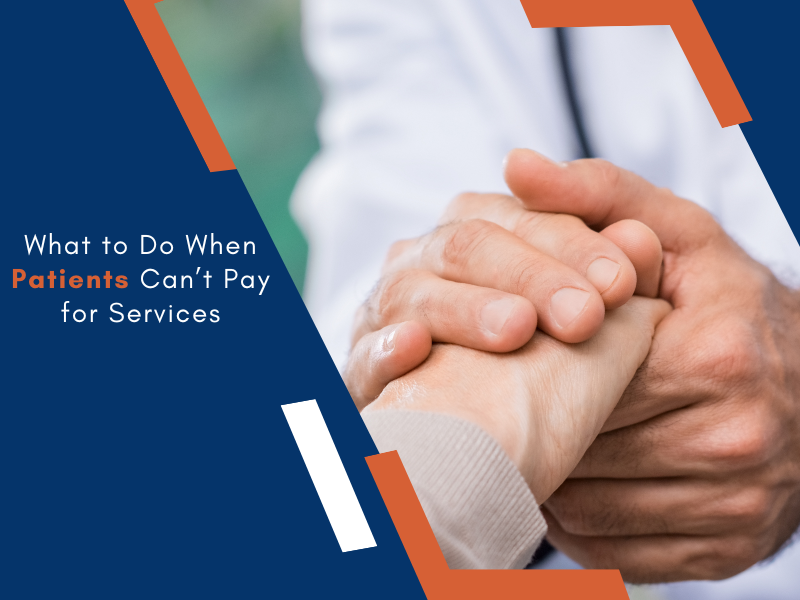In today’s healthcare landscape, the rising costs of medical care often place a significant burden on patients. When individuals are unable to pay for services, it creates challenges for both patients and healthcare providers. On one side, patients face the stress of managing their health with limited financial resources; on the other, providers must navigate financial sustainability while maintaining care standards. This delicate balance calls for practical strategies that ensure patients receive necessary care without jeopardizing the financial stability of healthcare organizations.
Understanding the Financial Challenges Patients Face
Many patients struggle to afford healthcare services due to factors such as high deductibles, out-of-pocket expenses, or limited insurance coverage. According to studies, a growing number of patients delay or forgo care entirely because of financial constraints. Addressing this issue begins with acknowledging these challenges and exploring ways to alleviate their burden.
Here are actionable steps healthcare providers can take to support patients who can’t pay for services.
1. Communicate Transparently About Costs
One of the first steps in addressing financial challenges is clear communication about costs. Patients often feel overwhelmed when they don’t understand what they owe or how their insurance coverage works.
- Break Down Costs: Provide detailed billing information that explains what the patient is paying for.
- Estimate Costs Upfront: Offering a cost estimate before services are rendered helps patients prepare financially.
- Be Available for Questions: Have a designated team or individual available to discuss financial concerns with patients.
2. Offer Flexible Payment Plans
For many patients, paying a lump sum upfront isn’t feasible. Flexible payment plans allow them to spread the cost over a longer period, making it more manageable.
- No-Interest Plans: Offer plans that don’t accrue additional interest over time.
- Customizable Payment Schedules: Let patients choose monthly amounts that fit within their budget.
- Automated Payments: Simplify the process with automated payment options to ensure consistency.
3. Introduce Sliding Scale Fees
Sliding scale fee structures adjust costs based on a patient’s income, ensuring affordability for those with limited financial resources.
- Assess Income Levels: Use income verification to determine eligibility.
- Apply Discounts Proportionately: Offer discounted rates that align with patients’ financial capabilities.
- Maintain Transparency: Clearly explain how the sliding scale system works to avoid confusion.
4. Encourage the Use of Financial Assistance Programs
Many patients are unaware of the financial assistance programs available to them. As a healthcare provider, you can guide patients toward these resources.
- Charity Care Programs: Direct patients to programs designed to reduce or eliminate medical bills for low-income individuals.
- Nonprofit Assistance: Collaborate with nonprofit organizations that offer grants or funding for healthcare costs.
- Government Aid: Educate patients about Medicaid, Medicare, or local government programs they may qualify for.
5. Simplify the Billing Process
Complex and unclear billing processes often exacerbate the stress patients feel when they can’t pay. Streamlining the system ensures that patients understand their obligations and options.
- Consolidated Bills: Provide a single bill that includes all services instead of multiple separate charges.
- Clear Language: Avoid medical jargon and use straightforward language in billing documents.
- Online Portals: Offer digital platforms where patients can view bills, make payments, or contact support.
6. Educate Patients About Preventative Care
Prevention is often less expensive than treatment, and helping patients understand this can reduce their overall healthcare costs.
- Routine Check-Ups: Encourage regular screenings and check-ups to catch issues early.
- Lifestyle Advice: Provide resources on maintaining a healthy diet, exercise, and stress management.
- Chronic Condition Management: Guide patients with chronic conditions on managing their health to prevent costly complications.
7. Partner with Financial Counselors
Financial counselors can work directly with patients to assess their financial situation and explore options for covering healthcare costs.
- Personalized Guidance: Offer one-on-one sessions to develop a payment strategy.
- Insurance Education: Help patients understand and maximize their insurance benefits.
- Debt Management: Provide advice on handling medical debt responsibly.
8. Utilize Technology to Improve Patient Engagement
Digital tools can enhance how you connect with patients regarding their financial concerns.
- Payment Apps: Use apps that allow patients to track their bills and make payments easily.
- Automated Reminders: Send reminders about upcoming payments or appointments to prevent missed deadlines.
- Virtual Financial Consultations: Offer teleconferences for patients to discuss their billing concerns conveniently.
9. Promote Community Support Initiatives
Sometimes, local communities can offer assistance to patients facing financial hardship. Partnering with community organizations or running in-house initiatives can make a big difference.
- Fundraisers: Host events to raise funds for patients in need.
- Volunteer Networks: Collaborate with local groups to provide free or discounted healthcare services.
- Awareness Campaigns: Educate the community on how they can support patients who struggle with medical expenses.
10. Consider Pro Bono or Low-Cost Services
While not always feasible on a large scale, offering pro bono or low-cost services in select cases can show patients that their well-being comes first.
- Community Clinics: Set aside specific days for free or discounted services.
- Routine Check-Up Camps: Offer basic healthcare services at reduced costs during health fairs or events.
- Emergency Assistance Funds: Establish a fund to support patients who face unexpected medical emergencies.
11. Empower Patients Through Financial Literacy
Educating patients about managing medical expenses can reduce their financial strain in the long term.
- Workshops and Seminars: Host sessions on budgeting for healthcare costs.
- Printed Resources: Provide brochures or handouts with tips on saving for medical expenses.
- Online Resources: Share educational videos or blogs that explain insurance basics and financial planning.
12. Offer Discounts for Early Payments
Encourage patients to pay their bills promptly by offering discounts for early or upfront payments.
- Percentage Discounts: Offer a small percentage off the total bill for payments made within a certain timeframe.
- Cash Incentives: Provide rewards or credits for timely payments.
- Seasonal Promotions: Introduce temporary discounts during certain times of the year.
Why Supporting Patients Matters
When patients can’t pay for services, it’s not just a financial issue—it’s a matter of trust and care. By offering compassionate solutions, healthcare providers can maintain strong patient relationships and foster a sense of loyalty. Ultimately, this benefits both patients and providers by creating a supportive healthcare environment where financial challenges don’t hinder access to quality care.
How Apaana Healthcare Can Help
Managing financial challenges in healthcare requires a partner that understands the nuances of patient care and operational efficiency. Apaana Healthcare drives operational excellence with global healthcare management solutions.
We specialize in:
- Member Enrollment: Simplifying the process for patients to access the care they need.
- Claims Administration: Ensuring that insurance claims are processed smoothly and efficiently.
- Medical Billing & Coding: Streamlining billing processes to reduce errors and enhance patient satisfaction.
- Provider Engagement: Building strong relationships between providers and patients for better care outcomes.
With Apaana Healthcare, you gain a trusted partner dedicated to ensuring cost-effective solutions while putting your patients’ needs first. Connect with us today to discover how we can transform your healthcare operations for the better.





